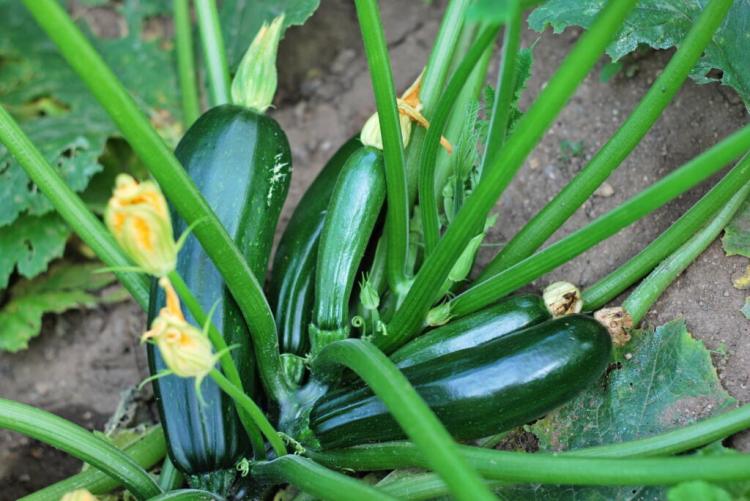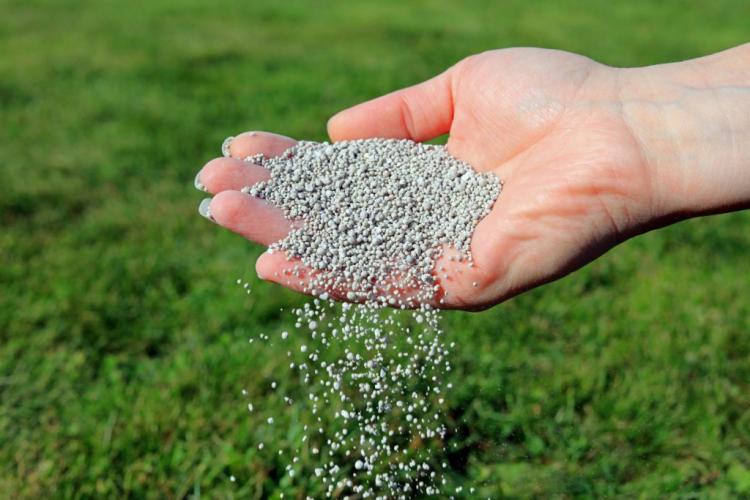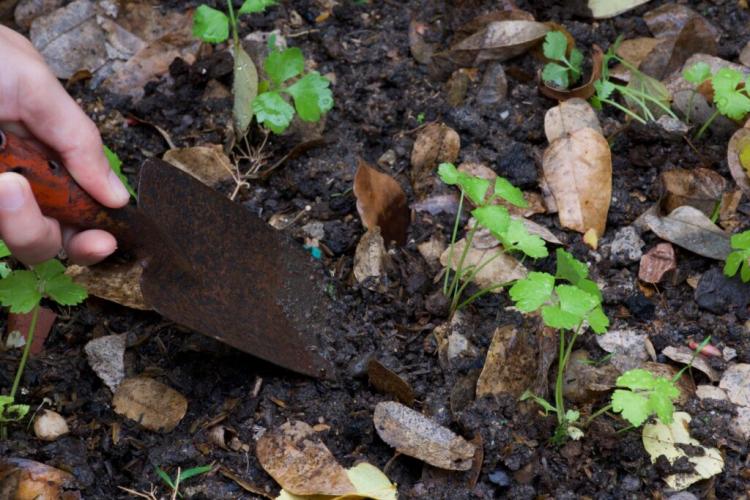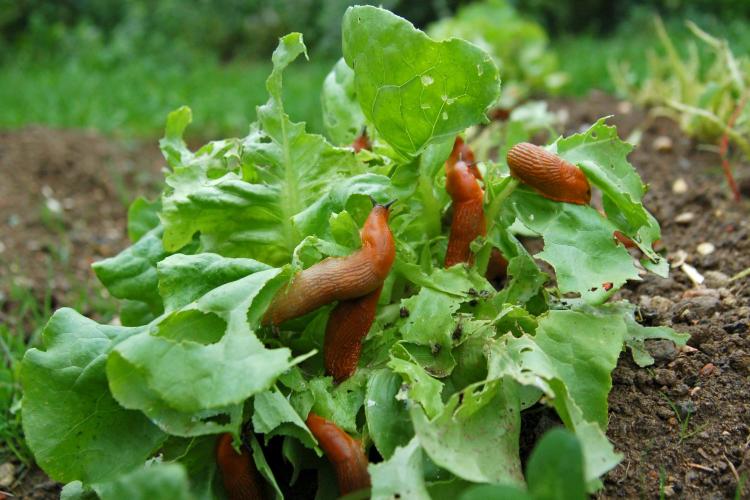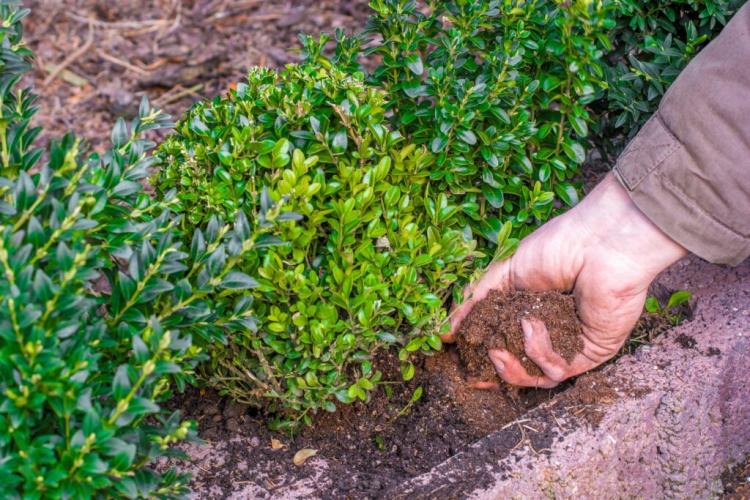Mixed culture: which plants are ideally suited to each other?
A successful mixed culture has many advantages. Here you can find out what you need to know in order to plant the right plants in the bed.
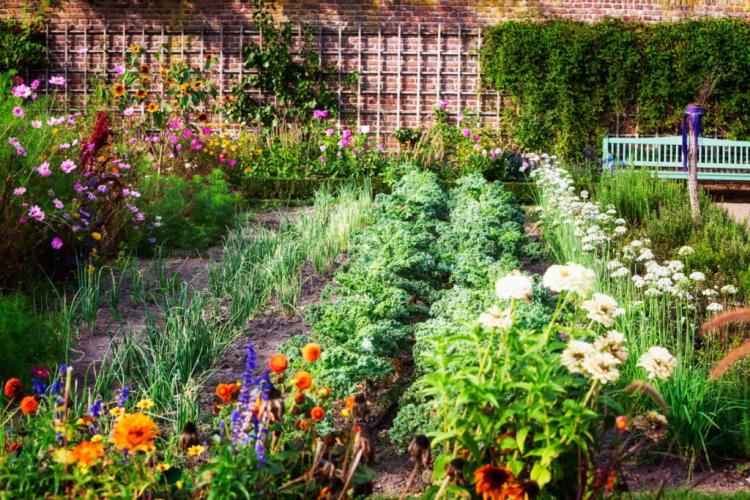
In a mixed culture, the influences of different plants have a positive effect on each other [Photo: Irina Fischer / Shutterstock.com]
Mixed culture was invented on farms in the early 19th century. Because, contrary to what the “cottage garden” in many botanical gardens suggests, before the 20th century cottage gardens were by no means neatly divided by box hedges, sorted according to aesthetic criteria and properly cared for. Rather, it was a question of fields on which crops for humans and animals grew unseparated and thus formed a diverse community. In this way, positive influences of the plants on each other were used and space, water and fertilizer were saved. Overall, the yield of the area was increased, while the expenditure for the resulting food and feed remained low. In return, such an area had to be looked after and cared for a little more intensively so that it did not become completely overgrown. Today this type of cultivation is called “mixed culture” and can be found in ecological cultivation guidelines, for example in Demeter cultivation. We introduce you to the mysterious world of mixed plantings.
What are the advantages of mixed cultures?
Table of Contents
No wonder that nature is also a single mixed culture. Highly efficient ecosystems develop in nature through competition and selection. Anyone who looks around in pristine nature will not discover any pure or monocultures. In fact, it is teeming with mixed cultures, because the more diverse a system, the better any available resource can be used. Introducing mixed cultures into your own garden offers a lot of advantages:
- The total yield per area increases : With mixed crops, plants are planted next to each other that have different requirements. For example, a small, shade-tolerant lettuce ( Lactuca sativa ) can be planted under a tall, sun-loving tomato ( Solanum lycopersicum ), whereby the space is optimally used and the shade from the higher species favors the other. Incidentally, this principle is also used in agroforestry systems. For example, sun-loving banana trees are grown between more shade-loving coffee plants. However, one should not only consider the form above ground, but also the root. While some species are deeply rooted and thus obtain their nutrients from deeper soil layers, others tend to stay close to the surface. Planting them side by side has the advantage that they do not compete with each other. The space can thus be optimally used in all directions.
- The susceptibility to pests is reduced : mixed cultures are not limited to the space requirements and the demands of the plants for a long time, but also use the plant's defense strategies. Many plants have a particularly intense smell, for example cabbage species ( Brassica ), rosemary ( Rosmarinus officinalis ) or sage ( Salvia ). These smells come from ingredients in the plants that are supposed to repel pests and pathogens. Herbal essential oils are nothing more than herbal antibodies. If you combine certain plants with each other, you can use this ingenious development of the plants. An effective combination here is, for example, tomatoes with basil ( Ocimum basilicum ) or strawberries ( Fragaria ) with garlic ( Allium sativum ) against powdery mildew or even roses ( Rosa ) with lavender ( Lavandula ) to reduce aphid infestation. In addition, pests are less attracted by mixed cultures and more beneficial insects are encouraged by more diverse habitats.

Plants with strong essential oils – like lavender – keep pests out of the bed [Photo: Katarzyna Mazurowska / Shutterstock.com]
- The vegetables taste better : In fact, with the right combination, those additional ingredients that often serve to protect against plants can have an effect on the taste of fruits. Why this is so cannot be justified across the board. What is certain, however, is that savory ( Satureja ), for example, has a positive effect on the taste of kidney beans ( Phaseolus vulgaris ) when it grows underneath.
- Less fertilizer is required : Because there is less bare soil in a closely planted mixed culture and this is also covered with a dense network of plant roots at different depths, the fertilization losses are much lower. Nutrients washed out downwards can be absorbed by deeper roots. There is hardly any “outgassing” of nutrients because those compounds that could volatilize are absorbed immediately. In addition, all plant species have different strategies for nutrient acquisition. This means that they have different tactics to loosen nutrient salts from the soil and make them available. If plants grow together with different tactics, this also increases the use of fertilizer. The reason for this is that each individual plant has, so to speak, a much larger arsenal of ways to dissolve nutrients from the soil.
- More biodiversity : A greater variety of crops and a better mixture are not only beneficial to the plants themselves. Numerous animals also benefit, because in this way they have much more habitats and sources of food.
- Improved soil activity : Due to the new variety of plants and thus the increased diversity of plant remains, the soil is not supplied with organic material on one side. What unilateral organic residues can have in extreme cases becomes clear in pure coniferous forests, where the soil is acidified by the countless needles. In a mixed forest, however, needles are not a problem. The diverse remains balance each other out in their extremes. This not only has a positive effect from a chemical point of view, it also increases the biodiversity of soil organisms as there are more food sources. Due to the increased three-dimensionality and density of the plants, the space directly on the ground is also better used and thus the ground cover is increased. As a result, erosion is reduced and the soil remains moist, which also promotes soil life, which ultimately leads to higher soil fertility.
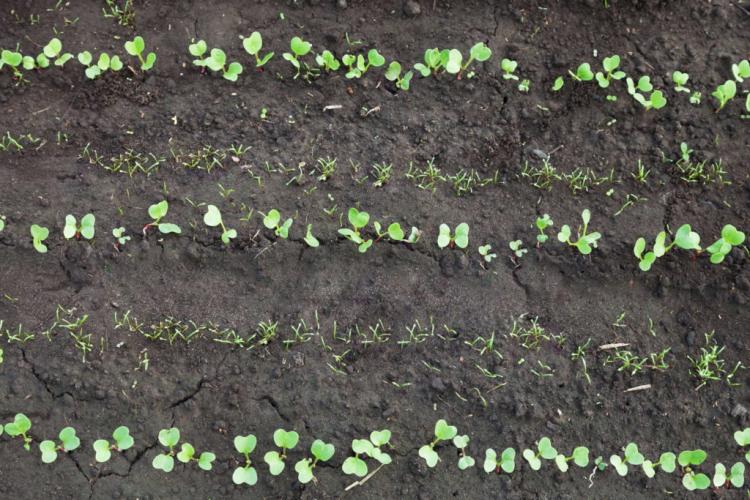
Mixed cultures prevent excessive unilateral pollution of the soil [Photo: Vadym Zaitsev / Shutterstock.com]
What do you have to consider with mixed culture?
Since mixed cultures are an incredibly complex system, because plants mutually influence each other in a wide variety of ways – both positively and negatively – the whole thing seems difficult to see through at first. Fortunately, through centuries of experience, we humans have figured out which plants go best together. There are plant tables for this, which show how well one plant goes with the other. Adhering to these is therefore a good way of orienting yourself. The following can be said for the basic structure:
- The three-dimensional structure of the room should be used optimally, so tall and sun-loving species should be combined with smaller and shade-tolerant ones. The same applies to the combination of deep and shallow-rooted species.
- Plants with an intense smell – such as various herbs, bulbous plants, but also, for example, Tagetes ( Tagetes ) – usually have a deterrent effect on various pests and pathogens. These species can be combined with susceptible species.
The selected combinations should be compared with the planting tables in order to rule out possible incompatibilities between the plants.
Which plants go well together?
Plants can influence each other both positively and negatively. We'll tell you which plants are mutually beneficial as neighbors and which you shouldn't plant next to each other.
Defense plants
Some plants can protect neighboring plants from pests and pathogens by using intensely smelling ingredients. In the following table we have put together some favorable combinations for you.
| Effect against / protection against | Affected crop type | Effective type |
|---|---|---|
| Aphids | Generally | Tagetes, garden cress, parsley, mint |
| Lettuce and cabbage | chervil | |
| Roses | Lavender and sage | |
| Beans | Savory | |
| Cabbage white butterfly | Cabbage | Celery, sage, rosemary, thyme |
| Nematodes | Potatoes, cabbage | Marigold |
| Miscellaneous | Potatoes, cabbage, tomatoes, strawberries | Tagetes |
| Snails | Edge planting with hyssop, tansy, chervil | |
| Bacteria and fungi | Garlic and other types of leek | Strawberries, roses |
| mildew | Tomatoes, cucumber, cabbage | basil |
| Pillar grate | Johannis and Josta berries | Vermouth |
| Monilia | Cherry and peach trees | horseradish |
Good neighbors, bad neighbors
You can find out which plants have positive effects on each other and which combinations tend to have negative effects in the following overview.
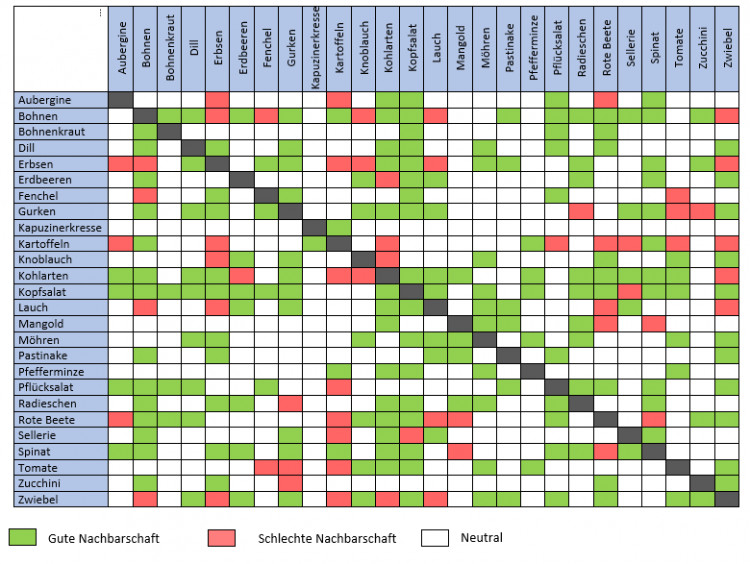
Expert tip: Although mixed culture – as already explained – requires less fertilizer, fertilization should not be completely dispensed with. The reason for this is that growing vegetables deprives the soil of a lot of nutrients. A high-quality fertilizer such as the Plantura organic universal fertilizer is ideal for your bed.
A special kind of mixed culture is the Milpa bed, in which corn, beans and pumpkin are grown together. We explain to you how you should create and maintain a Milpa bed.


